Evaporative Emission Pipes Engine Compartment
Removal Procedure
- Remove EVAP pipe quick connector in engine compartment.
- Remove EVAP pipe quick connector at engine.
- Remove EVAP pipe.
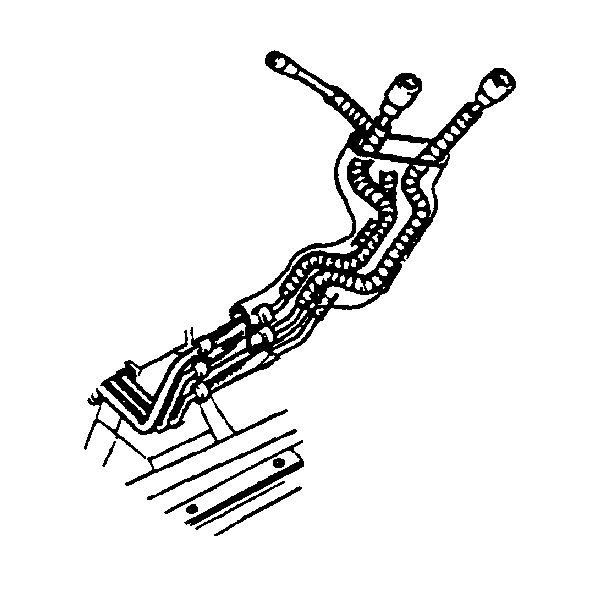
Notice: Do Not attempt to repair the EVAP pipes or the connecting hoses. Replace the damaged EVAP pipes or the connecting hoses are damaged. If the nylon EVAP pipe becomes kinked and cannot be straightened, it must be replaced.
Notice: Replace the EVAP pipes and hoses with the original equipment or parts that meet the GM specifications for those parts. The replacement EVAP pipe must have the same type of fittings as the original pipe in order to ensure the integrity of the connection. When replacing EVAP hoses, use only reinforced fuel-resistant hose identified with the word Fluoroelastomer or GM 6163-M on the hose. The inside hose diameter must match the outside pipe diameter. Do not use rubber hose within 100 mm (4 in) of any part of the exhaust system or within 254 mm (10 in) of the catalytic converter.
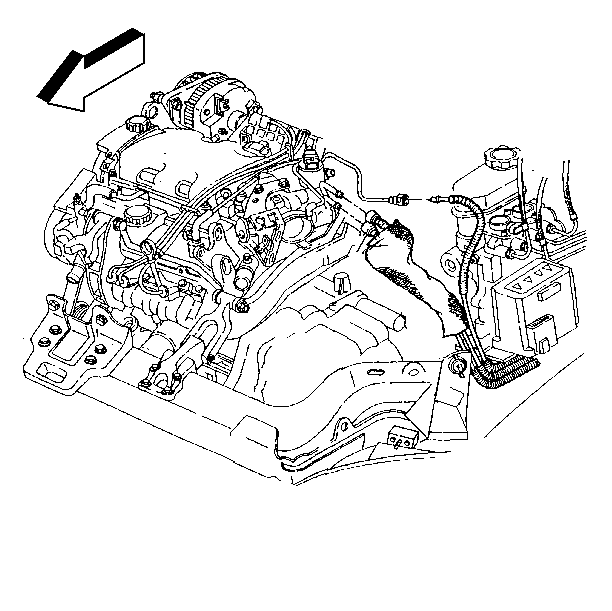
Installation Procedure
- Install EVAP pipe.
- Install EVAP pipe quick connector at engine.
- Install EVAP pipe quick connector in engine compartment.

Notice: Properly secure the EVAP pipe in order to prevent chafing of the pipe.

Evaporative Emission Pipes Canister to Fuel Tank
Removal Procedure
- Remove the fuel tank EVAP pipe quick connector at the EVAP canister.
- Remove the fuel tank. Refer to Fuel Tank Replacement
- Remove the fuel tank EVAP pipe from the fuel tank.
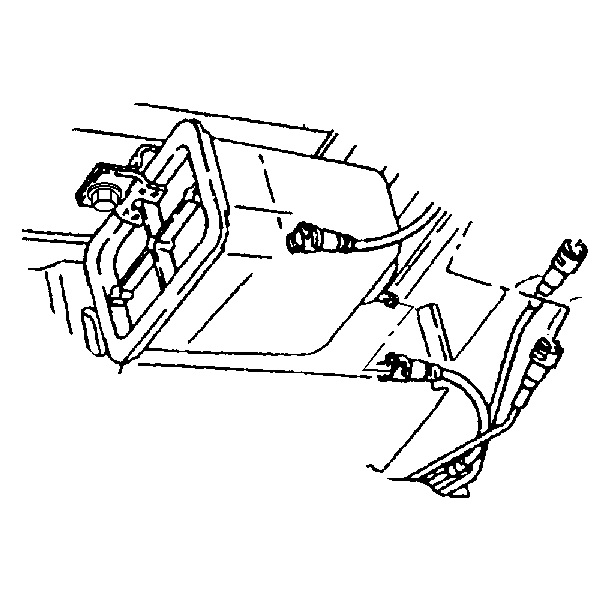
Notice: Do Not attempt to repair the EVAP pipes or the connecting hoses. Replace the damaged EVAP pipes or the connecting hoses are damaged. If the nylon EVAP pipe becomes kinked and cannot be straightened, it must be replaced.
Notice: Replace the EVAP pipes and hoses with the original equipment or parts that meet the GM specifications for those parts. The replacement EVAP pipe must have the same type of fittings as the original pipe in order to ensure the integrity of the connection. When replacing EVAP hoses, use only reinforced fuel-resistant hose identified with the word Fluoroelastomer or GM 6163-M on the hose. The inside hose diameter must match the outside pipe diameter. Do not use rubber hose within 100 mm (4 in) of any part of the exhaust system or within 254 mm (10 in) of the catalytic converter.
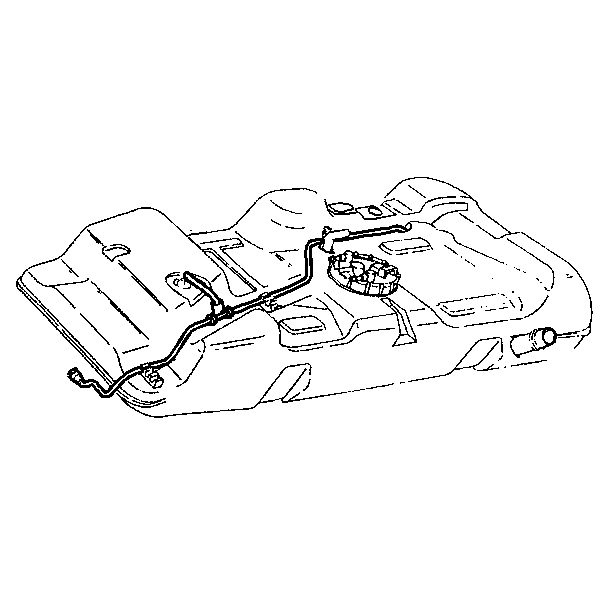
Installation Procedure
- Install the new fuel tank EVAP pipe onto the fuel tank.
- Install the fuel tank. Refer to Fuel Tank Replacement
- Install the fuel tank EVAP pipe quick connector at the EVAP canister.

Notice: Properly secure the EVAP pipe in order to prevent chafing of the pipe.

Evaporative Emission Pipes Frame Rail to Canister
Removal Procedure
- Remove the hardware retaining the chassis EVAP pipes. Note the location of the attaching hardware for installation.
- Remove the chassis EVAP pipe quick connector at the EVAP canister.
- Remove the chassis EVAP pipe quick connector at the front frame rail.
- Remove the chassis EVAP pipe.
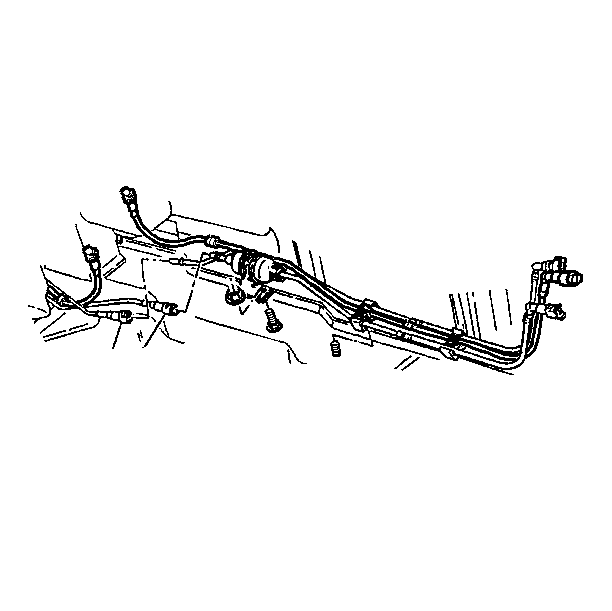
Notice: Do Not attempt to repair the EVAP pipes or the connecting hoses. Replace the damaged EVAP pipes or the connecting hoses are damaged. If the nylon EVAP pipe becomes kinked and cannot be straightened, it must be replaced.
Notice: Replace the EVAP pipes and hoses with the original equipment or parts that meet the GM specifications for those parts. The replacement EVAP pipe must have the same type of fittings as the original pipe in order to ensure the integrity of the connection. When replacing EVAP hoses, use only reinforced fuel-resistant hose identified with the word Fluoroelastomer or GM 6163-M on the hose. The inside hose diameter must match the outside pipe diameter. Do not use rubber hose within 100 mm (4 in) of any part of the exhaust system or within 254 mm (10 in) of the catalytic converter.

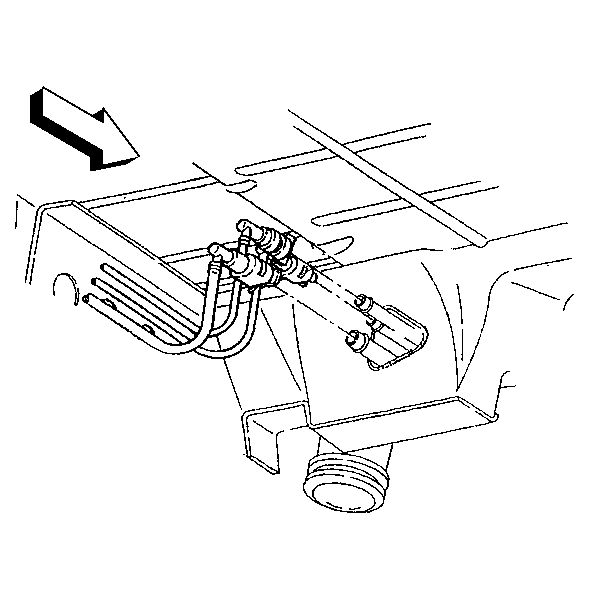

Installation Procedure
- Install the chassis EVAP pipe.
- Install the chassis EVAP pipe quick connector at the front frame rail.
- Install the chassis EVAP pipe quick connector at the EVAP canister.
- Install the hardware retaining the chassis EVAP pipe.

Notice: Properly secure the EVAP pipe in order to prevent chafing of the pipe.
Important: Route the replacement EVAP pipes in the same manner as the original EVAP pipes were routed.


Evaporative Emission Pipes Engine Compartment to Frame
Removal Procedure
- Remove the EVAP pipe quick connect fitting in the engine compartment.
- Raise the vehicle.
- Remove the EVAP pipe quick connect fitting at the front frame rail.
- Remove the EVAP pipe attaching hardware noting position for installation.
- Remove the EVAP pipe.

Notice: Do Not attempt to repair the EVAP pipes or the connecting hoses. Replace the damaged EVAP pipes or the connecting hoses are damaged. If the nylon EVAP pipe becomes kinked and cannot be straightened, it must be replaced.
Notice: Replace the EVAP pipes and hoses with the original equipment or parts that meet the GM specifications for those parts. The replacement EVAP pipe must have the same type of fittings as the original pipe in order to ensure the integrity of the connection. When replacing EVAP hoses, use only reinforced fuel-resistant hose identified with the word Fluoroelastomer or GM 6163-M on the hose. The inside hose diameter must match the outside pipe diameter. Do not use rubber hose within 100 mm (4 in) of any part of the exhaust system or within 254 mm (10 in) of the catalytic converter.

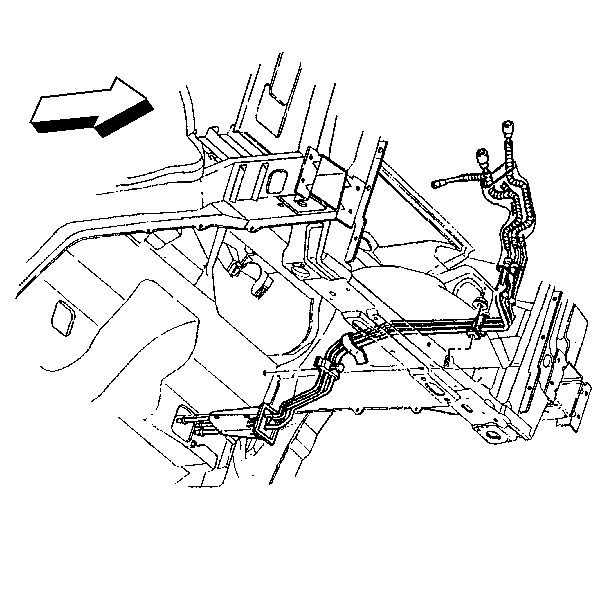
Installation Procedure
- Install the EVAP pipe.
- Install the EVAP pipe attaching hardware as noted during removal.
- Install the EVAP pipe quick connect fitting at the frame rail.
- Lower the vehicle.
- Install the EVAP pipe quick connect fitting in the engine compartment.

Notice: Properly secure the EVAP pipe in order to prevent chafing of the pipe.


